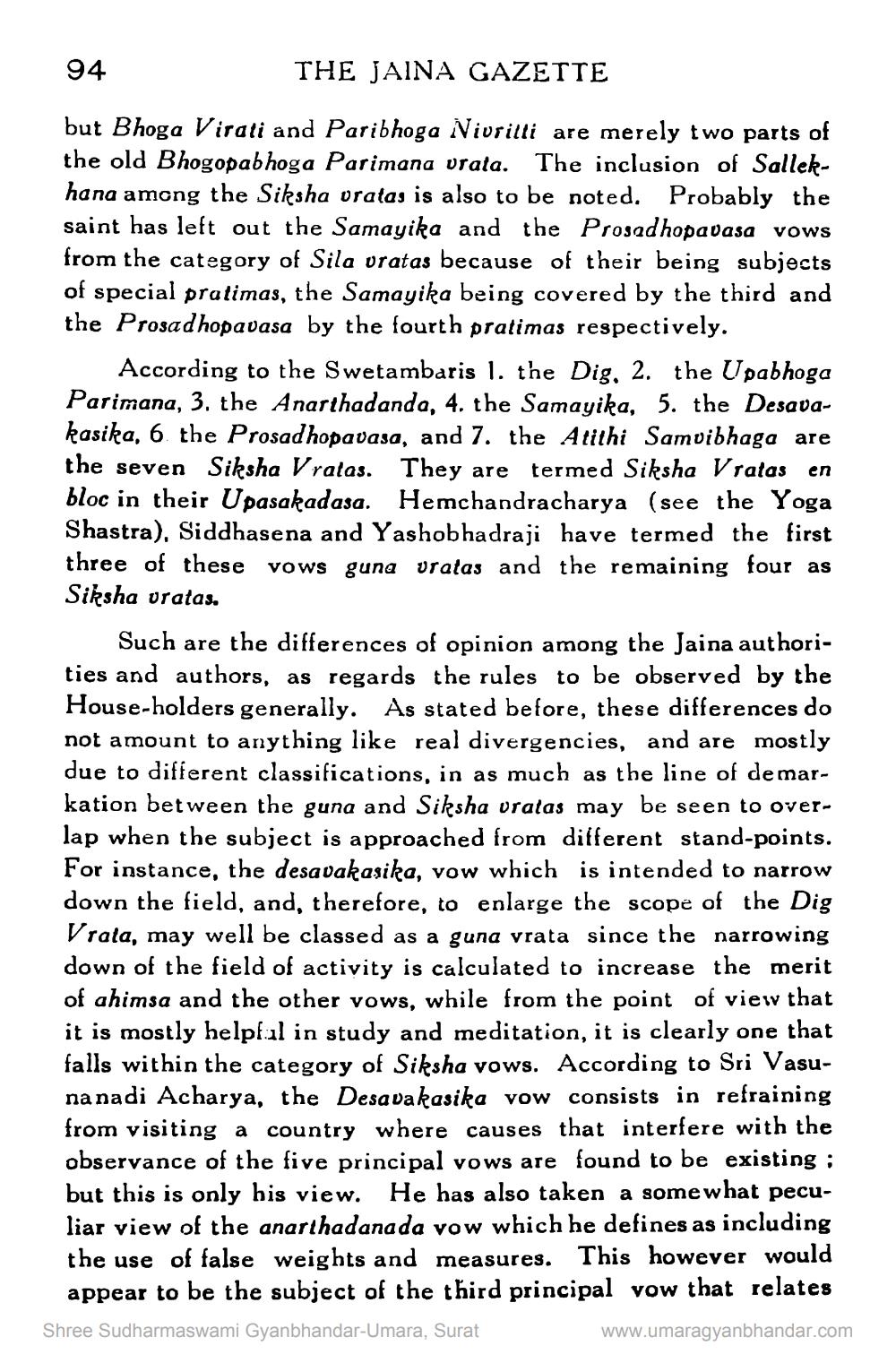________________
94
THE JAINA GAZETTE
but Bhoga Virati and Paribhoga Nivrilli are merely two parts of the old Bhogopabhoga Parimana vrata. The inclusion of Sallekhana among the Siksha uratas is also to be noted. Probably the saint has left out the Samayika and the Prosad hopavasa vows from the category of Sila vratas because of their being subjects of special pratimas, the Samayika being covered by the third and the Prosad hopavasa by the fourth pratimas respectively.
According to the Swetambaris I. the Dig, 2. the Upabhoga Parimana, 3. the Anarthadanda, 4. the Samayika, 5. the Desavakasika, 6. the Prosad hopavasa, and 7. the Atithi Samuibhaga are the seven Siksha Vratas. They are termed Siksha Vratas en bloc in their Upasakadasa. Hemchandracharya (see the Yoga Shastra), Siddhasena and Yashobhadraji have termed the first three of these vows guna vratas and the remaining four as Siksha uratas.
Such are the differences of opinion among the Jaina authorities and authors, as regards the rules to be observed by the House-holders generally. As stated before, these differences do not amount to anything like real divergencies, and are mostly due to different classifications, in as much as the line of demarkation between the guna and Siksha vratas may be seen to overlap when the subject is approached from different stand-points. For instance, the desavakasika, vow which is intended to narrow down the field, and, therefore, to enlarge the scope of the Dig Vrata, may well be classed as a guna vrata since the narrowing down of the field of activity is calculated to increase the merit of ahimsa and the other vows, while from the point of view that it is mostly helpfal in study and meditation, it is clearly one that falls within the category of Siksha vows. According to Sri Vasunanadi Acharya, the Desavakasika vow consists in refraining from visiting a country where causes that interfere with the observance of the five principal vows are found to be existing : but this is only his view. He has also taken a somewhat peculiar view of the anarthadanada vow which he defines as including the use of false weights and measures. This however would
appear to be the subject of the third principal vow that relates Shree Sudharmaswami Gyanbhandar-Umara, Surat
www.umaragyanbhandar.com




